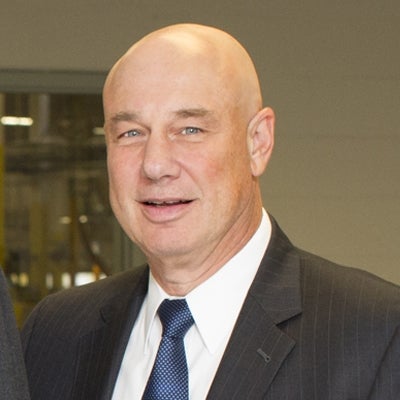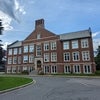With $6M, AIS decided to stay in Massachusetts
 Bruce Platzman, president, CEO and co-founder of AIS, Leominster.
Bruce Platzman, president, CEO and co-founder of AIS, Leominster.
Four years ago, office furniture manufacturer AIS was spread out between five different locations across Central Massachusetts. So President, CEO and Co-founder Bruce Platzman decided to start looking at ways to consolidate the company’s headquarters under one roof.
Platzman knew he wanted to stay in Massachusetts, but because of lower overhead costs in other states and countries, he didn’t think that would be financially feasible. He managed to negotiate $6 million in tax relief through different capital programs, allowing AIS to stay in Massachusetts and move its consolidated headquarters from Hudson to Leominster just short of 16 months ago. The company also has a manufacturing plant in Texas.
Today, the Leominster facility is scheduled to be fully operational within the next month or so, and administrative personnel are scheduled to make the move from Hudson on April 1. In an interview last month, Platzman spoke about being a low-tech manufacturing company in a high-tech environment, reshoring jobs and his upcoming plans.
When was the company originally founded?
It was founded in 1990 in downtown Boston -- just myself and another guy. We had a very, very small factory, like 1,000 square feet. And in 1992 we moved out to Hudson, and expanded in the Hudson area to the five buildings, and then 16 months ago moved into this building in Leominster.
What do you make?
We manufacture contract office furniture. Everything that would be used within the office environment, with the only exception being wood furniture. We don’t manufacture any real wood. All of our products are made out of steel, or something that’s covered in real fabric, or laminate. But when I say everything, it’s from cafeterias, to conference rooms, to training rooms, obviously to the office environment, to lobbies -- everything you would use in an office.
You called what you do low-tech manufacturing in a high-tech region. How is that financially sustainable?
It’s a high-tech region and certainly a high-tech state. We have embraced what’s called lean manufacturing. We’ve been recognized by winning what’s called a Shingo prize, which looks at all North American companies -- big, small and medium -- and recognizes them for embracing lean manufacturing. What lean does is it takes all the waste of the processes and in some cases is very simple, like eliminating waste, going to get parts and tools and things and putting them into the workspace, creating less floor space but more efficiency. We were recognized a few years ago by winning the Shingo prize, which only 10 companies a year win in all of North America, and we had the smallest company that’s ever won ... If you don’t embrace lean manufacturing in the United States, especially in areas like this, you’ll be out of business.
It is a continual journey. We’re always looking at becoming more efficient. We also deal with getting information from your workers. It’s not a bunch of managers saying, "This is what you’re going to do." Every day, every department out there meets with their people and they share ideas. Who knows best than the guy that’s on the floor, putting the fabric in the panels or painting a product? What can we do as a company to make their jobs easier, more efficient and more profitable? That’s what it’s all about -- open collaboration. The old style hierarchy in manufacturing was the boss told you what to do, and if you don’t, you’re fired. Now it’s a lot more collaborative, and people want to understand what is making the work more efficient, and what’s making people happy. A happy, more productive worker is going to be a more efficient worker.
But Massachusetts is such a high-cost environment.
There is a subset of employees that are looking for that $11, $11.50, or $12 an hour jobs, and there are not a lot of places they can turn, if it’s not in the landscaping or the fast food industry. There are not a lot of good jobs out there, so it’s worked out. It’s been great for that workforce, but at the same time it’s been great for us to be able to tap into that and provide good jobs with full benefits and decent pay that they traditionally would not be able to get that in other places.
Why did you decide to move to Leominster from Hudson, instead of somewhere else?
What happened was four years ago we were up to about five buildings between Clinton and Hudson. It was very inefficient -- we had 23 53-foot trailers and drivers running from plant to plant, bringing materials, never having the right stuff -- just incredibly inefficient. I decided about four years ago to try to find a building -- one building -- that could house the entire company. The problem was, the search was somewhat limited within the state of Massachusetts because I didn’t necessarily want to move from Massachusetts. My roots are here. I wanted to try and stay in Central Massachusetts, but at the same time my board of directors said, "Listen, you need to broaden that search. What we mean by that is we hear Texas has great incentives, and obviously a lot of people move to Mexico and open up manufacturing plants right over the border. NAFTA makes it a lot easier, and we want you to examine that." And I did. I reached out -- I had meetings with Texas, I had meetings with a company that helps United States companies move to Mexico. I also reached out to the politicians in the state. The lieutenant governor hired somebody, an independent company that works as a liaison between companies that want to either move to Massachusetts or stay and expand in Massachusetts and see what incentives are out there, and also the mayor of Leominster was just phenomenally helpful.
So between the city and the state, we were granted about $6 million in tax relief through different incentive packages that are out there, through capital investments, through taking on an empty building -- this building was vacant for 10 years. The city welcomed us. We now have 400 to 500 jobs in the city of Leominster that were not there just a year ago. That made it easy for me to go back to the board and say, "Listen, I just got $6 million. We have a building that fits our needs. It’s close in proximity, so we won’t have to rehire 400 to 500 people." I was very, very adamant about these employees, on all levels, because they brought us to the point where we are today. I wasn’t going to stand in front of them and say, "Listen, thanks very much, see you later, but we’re moving to Mexico." I fought long and hard to make sure that didn’t happen. Fortunately for all of us that worked out.
And then not only did you bring all of your people under one roof, but you also created some new jobs?
Actually, since 15 or 16 months ago, we’ve created about 100 new jobs. When we’re totally done, because we’re going to start a second shift, we’ll create about 100 jobs over the next two years. So a total of 200. The next 100 will come over the next 24 months.
What are your plans for the next year?
The factory is going to be 100-percent operational over the next two to three months. We’ll be moving in here April 1, the administrative people who aren’t here yet.
We’re introducing a lot of seating products and some other products that can be used in the office environment. One of our big goals and initiatives is to continue to in-source jobs and get the factory operational without interrupting our service. A lot of times when companies are moving factories, there’s a lot of downtime, and so far we’ve had zero. And that’s our goal. We don’t want to interrupt our customer base at all as we continue to move, expand and grow within this facility. Obviously the big project is to get our 75 office people here. That’s going to happen the first week of April, so we’re pretty happy and excited about that.









0 Comments